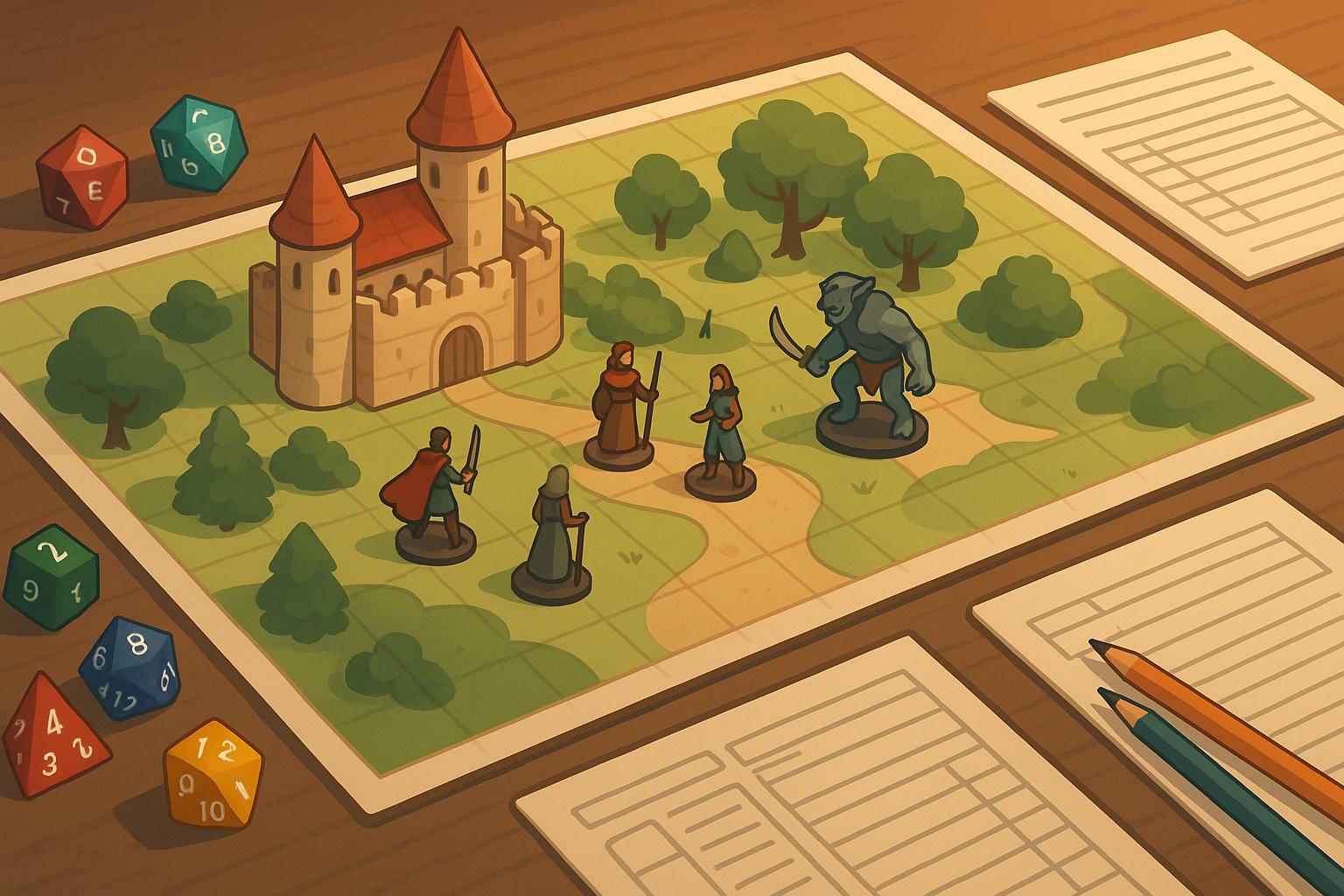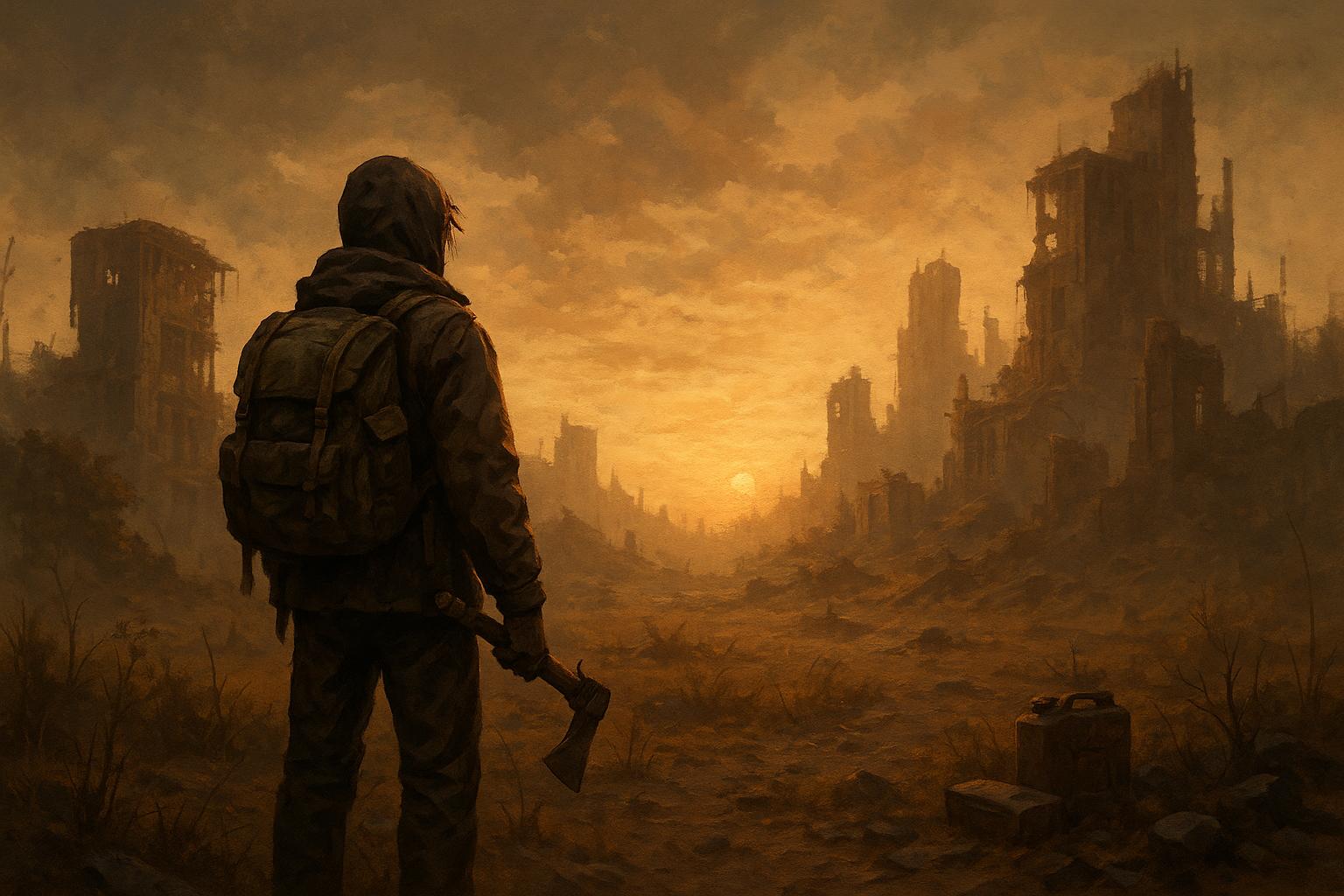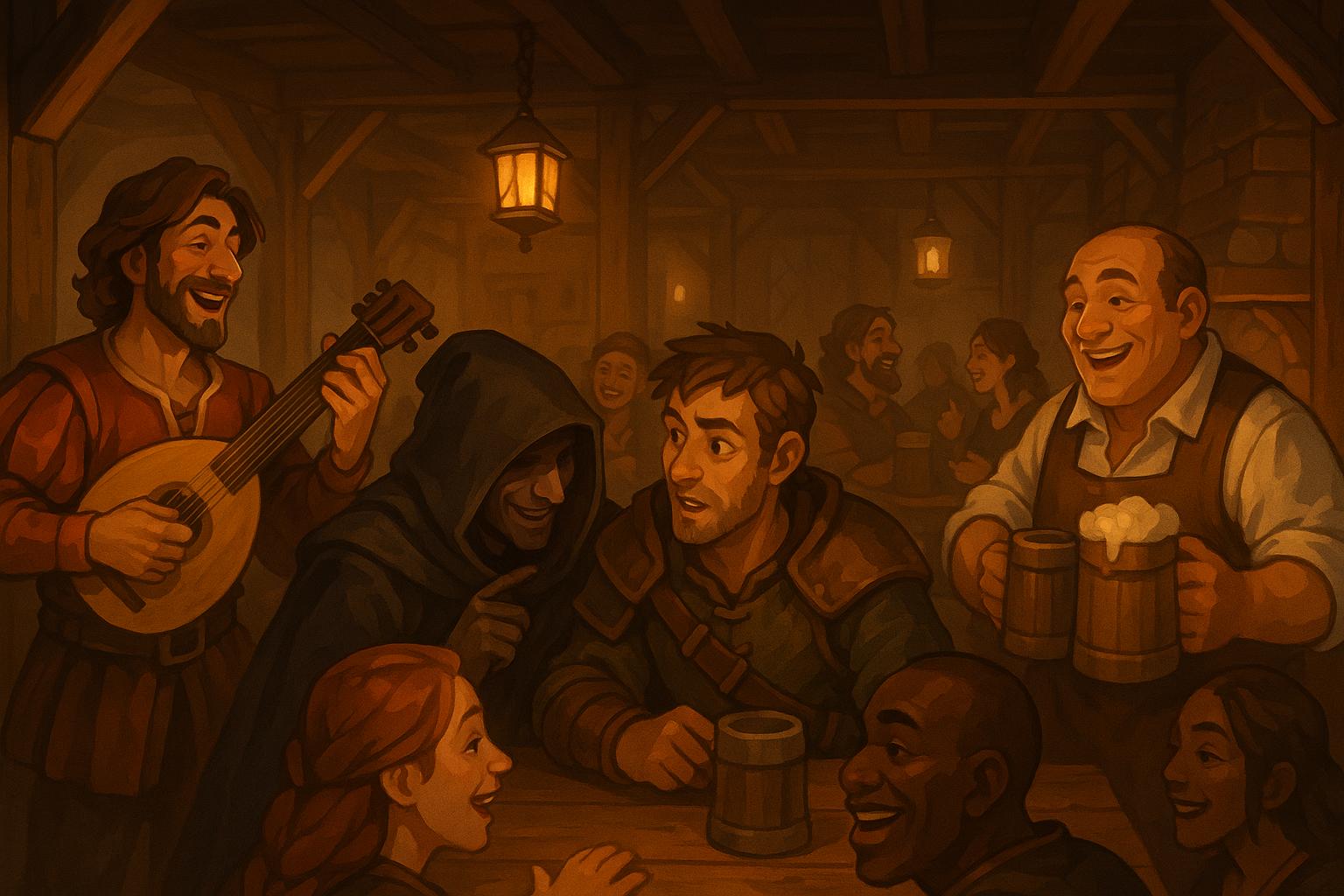Want to create unforgettable RPG campaigns? Start here.
A great RPG group thrives on balance, communication, and teamwork. Whether you're a Game Master or a player, here's what you need to know:
- Combat Roles: Tanks absorb damage, healers restore health, damage dealers defeat enemies, controllers manage the battlefield, and support characters boost the team.
- Non-Combat Roles: Faces handle negotiations, scouts gather information, utilities solve puzzles, and loremasters provide knowledge.
- Player Social Roles: Facilitators keep the game organized, mediators resolve conflicts, strategists plan tactics, and enthusiasts keep spirits high.
- Power Balance: Game Masters guide the story while ensuring all players have a voice. Players contribute by engaging with the game and supporting each other.
- Player Styles: Achievers love progression, explorers enjoy lore, socializers value roleplay, and tacticians thrive on strategy.
- Adapting to Changes: Smoothly add or remove players, adjust roles, and recalibrate group dynamics when needed.
Quick Tip: Choose an RPG system that matches your group's preferences for combat, roleplay, and complexity. Strong group dynamics make every session memorable.
How Do You Build RPG Party Chemistry?
Basic RPG Group Roles
Understanding combat and social roles is key to creating a well-rounded RPG experience. While these roles can change and overlap during a campaign, having clear responsibilities keeps the group organized and engaged.
Character Classes and Combat Roles
Most RPG parties rely on specific combat roles to handle challenges effectively. Each role plays a distinct part in the group's success.
| Role | Primary Function | Typical Classes | Key Contributions |
|---|---|---|---|
| Tank | Absorbs damage | Fighter, Paladin, Barbarian | Protects allies, controls the battlefield |
| Healer | Restores health | Cleric, Druid, Bard | Keeps the party healthy, removes negative effects |
| Damage Dealer | Delivers high offense | Rogue, Wizard, Warlock | Quickly eliminates threats |
| Controller | Manages the battlefield | Wizard, Druid, Sorcerer | Handles crowd control and area effects |
| Support | Enhances the team | Bard, Artificer, Ranger | Buffs allies, weakens enemies |
Outside of combat, party members often take on other critical roles:
- Face: Leads social interactions and negotiations.
- Scout: Handles reconnaissance and gathers crucial information.
- Utility: Tackles puzzles and uses specialized skills.
- Loremaster: Provides knowledge and background insights.
These combat and non-combat roles form the backbone of an effective party setup. Next, we'll look at how players contribute socially at the table.
Player Social Roles at the Table
The dynamics between players are just as important as in-game roles. Players naturally take on certain social roles that help the group function smoothly:
The Facilitator keeps the game running by:
- Taking notes.
- Tracking initiative.
- Reminding the group of key plot points.
The Mediator resolves conflicts by:
- Offering compromises during disagreements.
- Ensuring quieter players have a chance to contribute.
- Balancing different play styles within the group.
The Strategist improves decision-making by:
- Planning tactical approaches.
- Managing party resources.
- Coordinating abilities across characters.
The Enthusiast lifts spirits by:
- Encouraging roleplay moments.
- Celebrating successes.
- Keeping the table's energy positive.
Good groups remain flexible, with members stepping into different roles as needed. These roles aren't fixed - they naturally emerge during play. The best parties support each other, both in-game and around the table, to create a fun and engaging experience for everyone.
Power Balance in RPG Groups
Balancing power dynamics in tabletop RPGs is key to creating a fun and inclusive environment. It requires a mix of strong leadership from the Game Master (GM) and active involvement from players. When done right, everyone feels included while the game stays organized.
Game Master Leadership
The GM plays a crucial role in steering the game. They need to balance authority with flexibility to ensure the game runs smoothly. Here's what effective GM leadership looks like:
Core Responsibilities
- Establish and enforce table rules
- Keep the game moving at a good pace
- Resolve rule disputes fairly
Authority Guidelines
- Stay consistent with rulings
- Be open about decisions
- Invite player input on major story developments
- Maintain the final say on interpreting rules
This approach ensures the GM can guide the game while giving players a voice.
Equal Player Input
Strong GM leadership works best when paired with active and balanced player participation. Here’s how to encourage everyone to engage:
Techniques for Encouraging Participation
- Ask quieter players direct questions to involve them
- Develop storylines tailored to individual characters
- Rotate the spotlight so each player has a chance to shine
- Use group decision-making to ensure all voices are heard
| Player Type | Engagement Strategy | Tips for Success |
|---|---|---|
| Talkative Players | Structured turn-taking | Set a clear speaking order during key moments |
| Quiet Players | Private feedback options | Allow input through notes or post-session chats |
| Mixed Groups | Round-robin discussions | Have each player share one idea before debating |
| New Players | Mentorship system | Pair them with experienced players for guidance |
How to Approach Group Decisions
- Clearly explain the situation to the group.
- Give everyone a chance to share their thoughts.
- Discuss the options as a team.
- Decide through consensus or a vote.
- Record the decision to avoid confusion later.
A balanced power dynamic ensures the GM keeps the game on track while players actively shape the story. This collaboration is what makes RPGs so engaging.
sbb-itb-b8b00a5
Player Engagement and Preferences
Balancing in-game roles and ensuring equal player input are just the start. To create a truly engaging RPG campaign, it's important to shape the experience around each player's style. By understanding what motivates your players and choosing systems that fit the group's overall vibe, you can craft sessions that keep everyone involved.
Understanding Player Styles
Each player comes to the table with their own goals and motivations. Here's a breakdown of common player types and how to keep them engaged:
| Player Type | What They Love | How to Keep Them Engaged |
|---|---|---|
| Achievers | Leveling up and earning rewards | Offer clear progression and meaningful rewards |
| Explorers | Discovering lore and the world | Add detailed settings and hidden secrets |
| Socializers | Building relationships and roleplay | Focus on NPC interactions and party dynamics |
| Tacticians | Strategic combat and mechanics | Include complex battles and tactical options |
How to Keep Everyone Hooked:
- Mix scenarios that appeal to multiple play styles.
- Rotate challenges to highlight each player's strengths.
- Pay attention to engagement levels and tweak as needed.
Understanding these styles also helps you pick an RPG system that fits your group's preferences.
Finding the Right RPG System
Once you know what your players enjoy, the next step is choosing a system that enhances group dynamics. Tools like the TTRPG Games Directory can help you find games with detailed descriptions of rules and mechanics to match your group's needs.
What to Consider When Choosing a System:
- Rule Complexity: Match the system's difficulty to your group's experience level.
- Combat vs. Roleplay: Find a balance that aligns with player interests.
- Genre Fit: Make sure the system fits the setting your group wants to explore.
- Variety: Look for systems that cater to multiple play styles.
Key Factors for System Compatibility:
1. Mechanical Fit
Ensure the system supports your group's play style, whether it's heavy on storytelling, combat, or a mix of both.
2. Learning Curve
Think about how experienced your group is and how open they are to learning new rules.
3. Session Flexibility
Pick systems that work with your usual session length and frequency.
How to Gauge Group Dynamics:
- Notice which scenes get the most excitement and which ones lose their attention.
- Track which mechanics confuse or frustrate players and adjust accordingly.
Managing Group Changes
Keeping your RPG campaign running smoothly often means handling group changes effectively. Over time, players may leave, new ones might join, or schedules could shift. Managing these transitions well ensures the game stays enjoyable and cohesive.
Adding and Removing Players
Player transitions can affect both the story and group dynamics. Here's how to handle these situations:
When Adding New Players:
| Phase | Key Actions | Outcome |
|---|---|---|
| Before Joining | Share campaign details, house rules, and expectations | New player understands the game's setup |
| Character Creation | Help build a character that complements the group | Ensures a well-rounded party |
| First Sessions | Introduce them via a side quest or story event | Smooth integration into the narrative |
| Check-In | Follow up after a few sessions | Confirms they're comfortable and engaged |
When a Player Leaves:
- Provide a quick but meaningful narrative conclusion for their character.
- Allow the group a session or two to adjust to the new dynamic.
- Reassess encounters to fit the smaller group size.
After any change, revisit group roles and mechanics to keep things balanced.
Updating Group Roles
When the group changes, it's important to adjust roles to maintain balance and ensure everyone has fun.
How to Redistribute Roles:
1. Evaluate Party Balance
Look at the remaining characters and identify any gaps in combat or social roles. A well-rounded group typically includes:
- A damage dealer
- A healer or support character
- A utility/skill expert
- A tank or defender
2. Adjust Social Dynamics
Changes can also shift how players interact socially. Keep an eye on:
- Who naturally steps into leadership or organizational roles
- Whether anyone is taking on extra responsibilities
- Players who might need encouragement to participate more
3. Tweak Mechanics
Make practical adjustments to fit the new group size:
- Scale combat difficulty to match the party
- Adapt skill check requirements based on available abilities
- Balance screen time so everyone feels involved
Smooth Transition Tips:
- Host a "session zero" to address major changes.
- Update house rules and group expectations as needed.
- Allow new dynamics to evolve naturally during play.
- Be flexible with rules while everyone adjusts.
Group changes can breathe new life into your campaign, offering opportunities for fresh dynamics and new challenges. Thoughtful management ensures these transitions are smooth and enjoyable for everyone.
Conclusion
Mastering group roles in RPGs comes down to finding balance, maintaining clear communication, and supporting one another. These elements are the foundation of engaging and memorable campaigns.
A strong RPG group thrives on three key elements:
Balance
- Spread out combat roles effectively.
- Let social interactions develop naturally.
- Stay flexible when group dynamics shift.
Clear Communication
- Schedule regular check-ins between Game Masters and players.
- Discuss expectations and preferences openly.
- Be transparent when roles need to change.
Support
- Encourage players to highlight each other's character moments.
- Game Masters should ensure all players get a chance to shine.
If you're searching for the right RPG system for your group, the TTRPG Games Directory is a great tool to explore game mechanics and themes that match your group's preferences. Understanding your group's dynamics is key to picking a game that suits everyone's playstyle.
Ultimately, successful RPG groups aren't just about perfect character builds or role assignments. They're about creating a space where everyone feels included and excited to play. When the group dynamic is strong, every session becomes an adventure worth remembering.
FAQs
What's the best way to handle group dynamics when a new player joins our RPG session?
When a new player joins your RPG group, it's important to create a welcoming and inclusive environment. Start by introducing them to the group and giving a brief overview of the game's current storyline, rules, and character dynamics. This helps them feel connected and prepared to participate.
Encourage open communication by asking the new player about their character's background and how they envision fitting into the group. If possible, involve them in a session zero or a pre-game discussion to align expectations and ensure their character complements the existing party.
Finally, be patient and flexible. New players may take time to adjust to the group's play style, so offer guidance and positive reinforcement as they settle in. A collaborative and supportive approach will help maintain balance and ensure everyone enjoys the game.
How can a Game Master keep all types of players engaged and involved in a tabletop RPG campaign?
To keep all player types engaged, a Game Master (GM) should focus on understanding the preferences and play styles of their group. Some players may enjoy strategic combat, while others thrive on character-driven storytelling or puzzle-solving. Tailoring the campaign to include a mix of these elements ensures everyone feels involved.
Encourage open communication by asking players what they enjoy most about the game and incorporating their feedback into the campaign. Additionally, balance spotlight time so every character has moments to shine, and adapt the pacing to keep the game dynamic and exciting for everyone.
By creating a flexible and inclusive environment, the GM can foster a more enjoyable experience for all players, regardless of their individual preferences or play styles.
How can I pick an RPG system that matches my group's combat and roleplay style?
Choosing the right RPG system starts with understanding your group's preferences. Does your group enjoy tactical combat with detailed mechanics, or do they prefer immersive storytelling and character-driven narratives? Some systems excel in strategic gameplay, while others focus on creative roleplay and world-building.
Consider discussing with your group what they value most in a game - whether it's fast-paced action, deep character arcs, or a mix of both. Once you have a clear idea, explore a variety of RPG systems that align with those preferences. There’s a wide range of options available, from classic games to innovative indie titles, ensuring there’s something for every play style.


